If you want to take a memorable picture of Sydney, then you simply must include this famous landmark.
In this post, you’ll discover the ultimate list of facts about the Sydney Harbour Bridge, the most iconic bridge in Australia.
1. It connects Sydney’s central business district and the North Shore
The Sydney Harbour Bridge is the most important in the city of Sydney in New South Wales, Australia. It connects the city’s central business district with its northern suburbs referred to as the “North Shore.”
The bridge has a total length of 1,149 meters (3,770 feet) and starts at Dawes Point in the south and ends at Milsons Point in the north. Another famous building, the Sydney Opera House, is located just near the bridge as well.
The bridge is a magnificent feat of engineering and an amazing landmark in a wonderful city!

2. A bridge was proposed by a British convict in the early 19th century
Even though the bridge would only be constructed over 100 years later, some visionaries in the early 19th century already imagined the location would be great to build a bridge.
It was a British convict and renowned architect named Francis Greenway who was the first to allegedly propose a bridge to be built from the north to the southern shore of the Sydney Harbour in the year 1815.
Greenway was banished to Australia for the crime of forgery in the early 19th century and worked on architectural projects for the governor of Sydney.
He did so well that he was the first and only convict to be honored on a banknote as he was depicted on the Australian $10 note from 1966 to 1993.
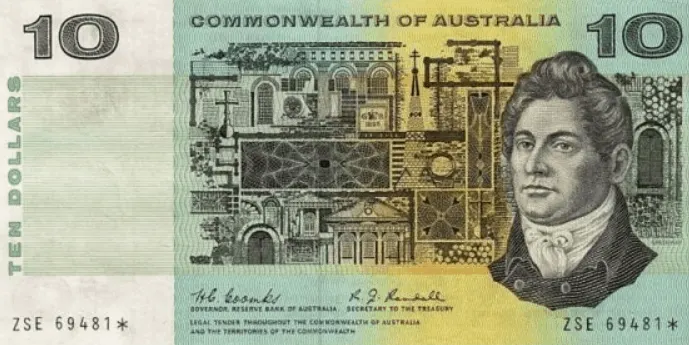
3. Numerous other proposals in the 19th century were all dismissed

The first note of an actual proposal didn’t come until the year 1825 when Greenway mentioned in “The Australian,” the main newspaper at the time, that a bridge would “give an idea of strength and magnificence that would reflect credit and glory on the colony and the Mother Country.”
Nothing came of it but his idea remained a topic of debate and multiple other proposals were submitted. This ranged from a floating bridge to a truss bridge and a high-level bridge with a price tag of $850,000.
All these proposals made in the 19th century ended up being shelved.
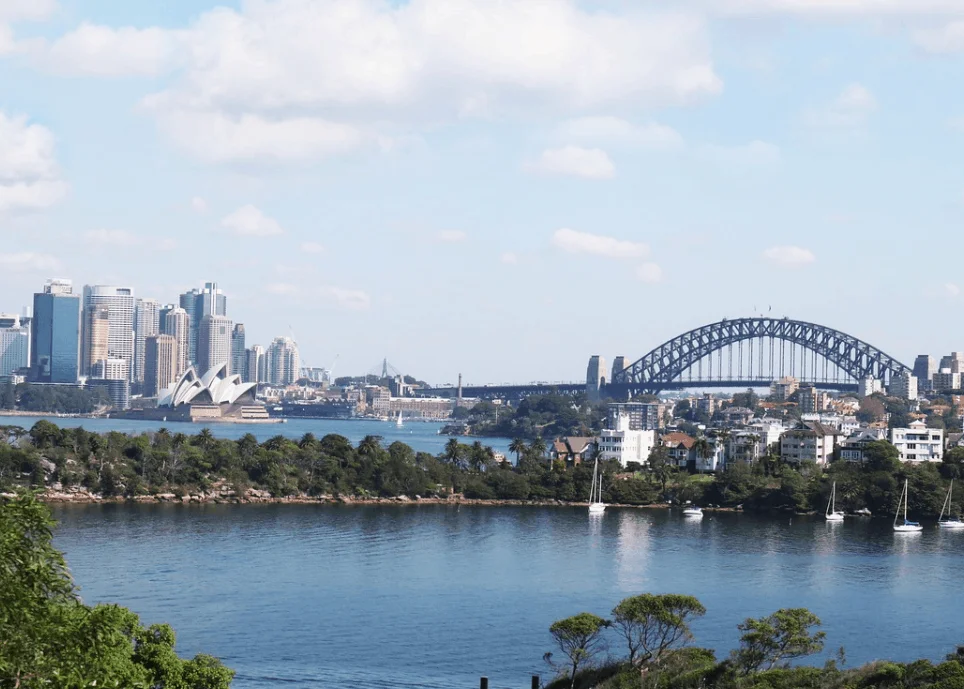
4. One man won 2 design competitions but the bridge was never built
The first time something concrete was done to actually build the bridge was the organization of an architectural competition in the year 1900.
A local engineer named Norman Selfe won the second prize with a suspension bridge, but the result was contested and a second competition was held, which won in the year 1902.
His winning submission was a steel cantilever bridge on which the competition board commented: “The structural lines are correct and in true proportion, and… the outline is graceful.”
Regardless of the competition organized by the local government at that time, nothing was done with the winning submission.
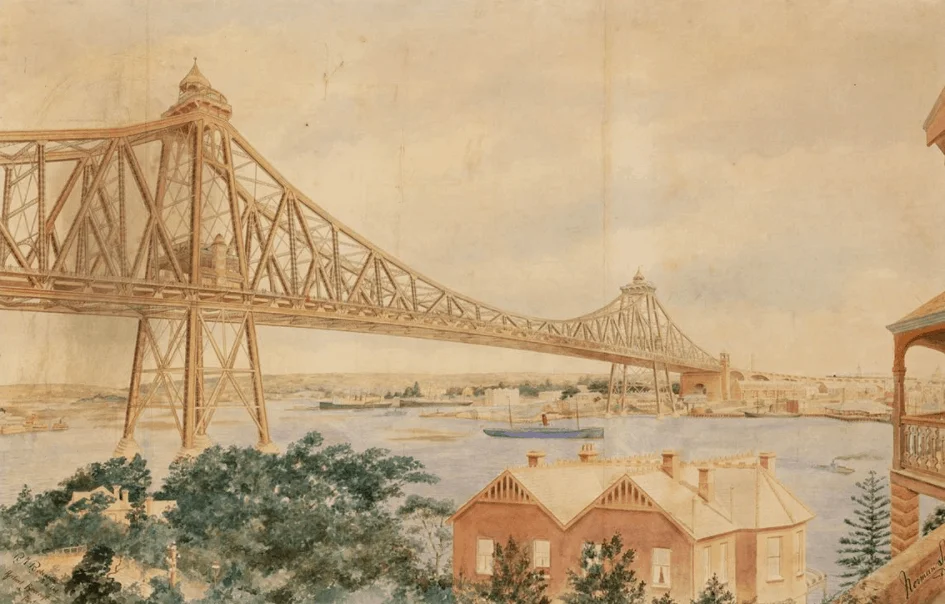
5. An amazing three-span bridge was proposed as well
One of the most remarkable facts about the Sydney Harbour Bridge is that 2 decades later, in the year 1922 and just before the bridge was about to be constructed, another interesting proposal was submitted. This consisted of a three-span bridge which had a unique feature.
The design created by Ernest Stowe featured connections to 3 different areas, including Balls Head, Millers Point, and Balmain. A memorial tower would have been built on Goat Island to divert the 3 roads.
Even though it was never built, it’s a pretty fascinating design nonetheless.
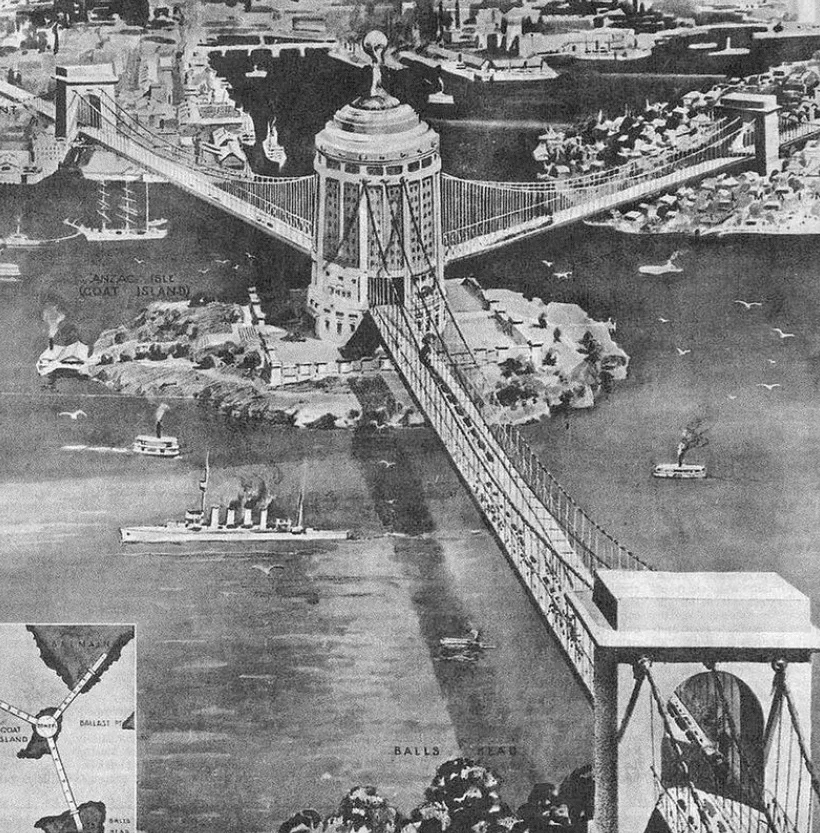
6. The original plan had a similar design as a bridge in New York City
In the early 1920s, the NSW Department of Public Works which was to build the bridge decided upon a general design they wanted the bridge to look like.
It was to be a single-arch bridge that resembled the Hell Gate Bridge, a bridge in New York City that was completed in the year 1916 and which indeed bears a striking resemblance to the Sydney Harbour Bridge.
In the year 1922, things became serious as the Sydney Harbour Bridge Act No. 28 was passed and funds were made available for the construction to start.
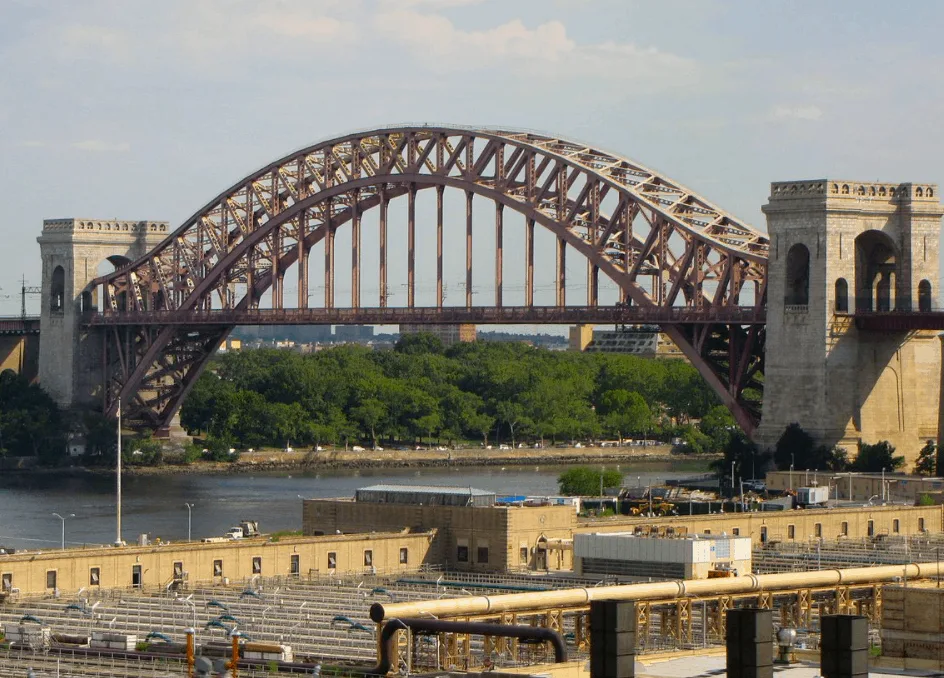
7. The Sydney Harbour Bridge was built by a British company
The moment a design was chosen and the act was passed, the Department of Public Works started looking for a construction company to build the bridge. They didn’t just look locally but went international and ended up receiving about 20 proposals.
The winner of the contract to build the bridge was British firm Dorman Long and Co Ltd, of Middlesbrough. This company would end up building the Tyne Bridge of Newcastle Upon Tyne as well in 1925.
One of the most interesting facts about the Sydney Harbour Bridge is that the bridge built by this company in Newcastle also bears a striking resemblance to the bridge they built in Sydney!

8. The shortest highway in Australia was named after the man overseeing the project
Another one of those fun facts about the Sydney Harbour Bridge is that the road crossing was named after the main supervisor of the project named John Bradfield.
The “Bradfield Highway” only runs for about 2.5 kilometers (1.6 miles) and is considered to be the shortest highway in Australia as it only consists of the road crossing the bridge and its approaches.
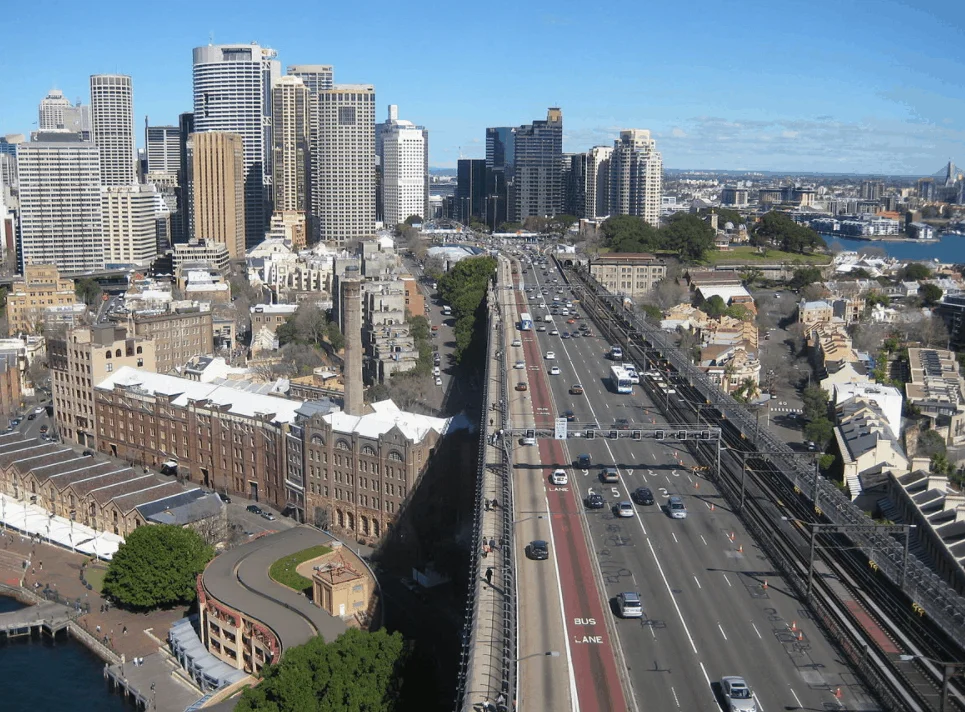
9. Construction of the bridge started in the year 1923
They didn’t waste any time because the first stone of the project, referred to in Australia as the “turning of the first sod,” happened on July 28, 1923, on the northern side.
Most of the work for the next 5 years would consist of preparing for the actual construction and constructing of the approaches of the bridge. Constructing the actual arch wouldn’t start until October 26, 1928.
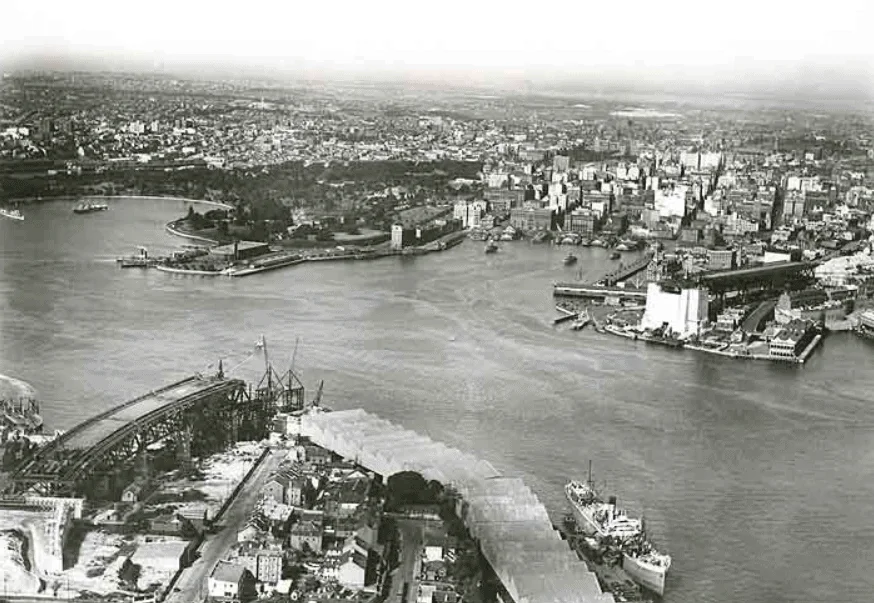
10. Hundreds of buildings were demolished to make way for massive pylons
Before the work on the massive pylons could even commence, about 469 buildings had to be demolished on the northern side. Only then could these massive structures be erected.
The concrete pylons stand 89 meters (292 feet) tall and are faced with granite. Over 250 Australian, Italian, and Scottish stonemasons quarried about 18,000 cubic meters (635,664 cubic feet) of granite in a quarry located in Moruya, about 300 kilometers (186 miles) south of Sydney.
These are indeed massive structures!
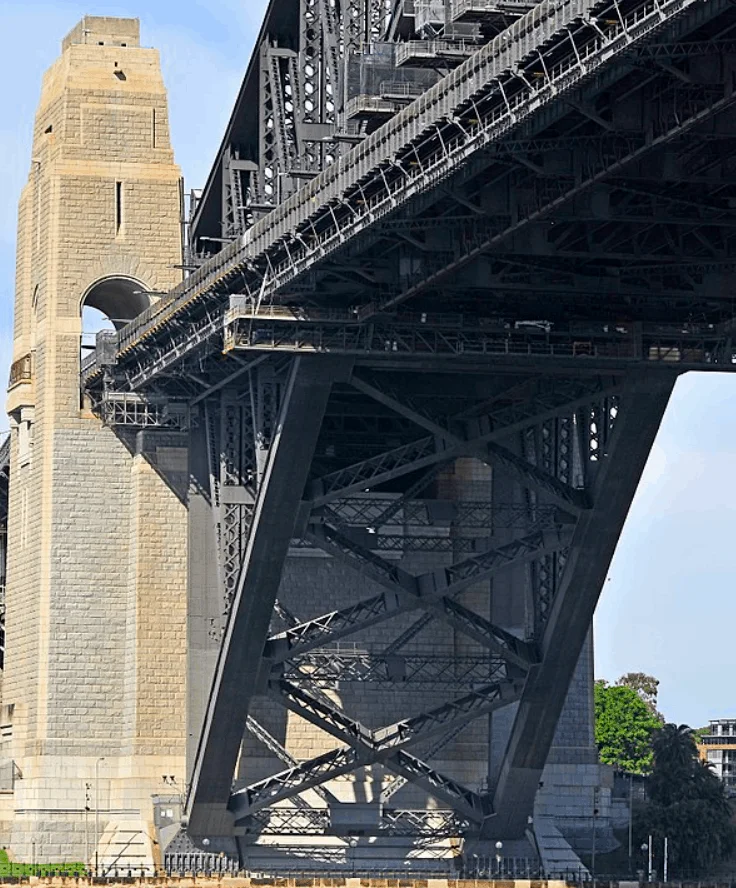
11. Working at the construction site wasn’t the safest job in the world
The bridge is held together by a total of 6 million rivets which were first heated before being inserted into the plates and before being rounded over with a large pneumatic rivet gun. Some of these rivets were up to 3.5 kilos (8 lbs) heavy and 39.5 centimeters (15.6 inches) long!
Then think of the fact that the archtops are out at a height of 134 meters (440 feet) above mean sea level and have a span of 504 meters (1,654 feet), and it’s not hard to imagine that this was a pretty dangerous job.
The death toll during construction was massive with 16 construction workers losing their lives and dozens of others injured, mainly while inserting the rivets.
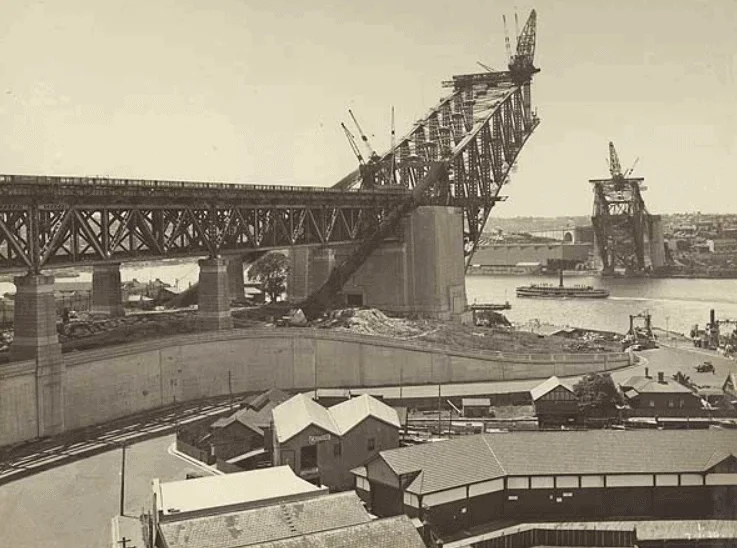
12. The official opening of the bridge happened on March 19, 1932
The construction of the bridge was officially completed when the final stone of the northwest pylon was put into place on January 15, 1932. Just 4 days later, the testing phase started when a steam locomotive safely crossed the bridge.
Testing continued for several more weeks and at one point, 96 locomotives were put on the bridge simultaneously, after which it was decided that the bridge was strong enough.
The bridge was officially opened on March 19, 1932, in a huge ceremonial event that attracted hundreds of thousands of people!
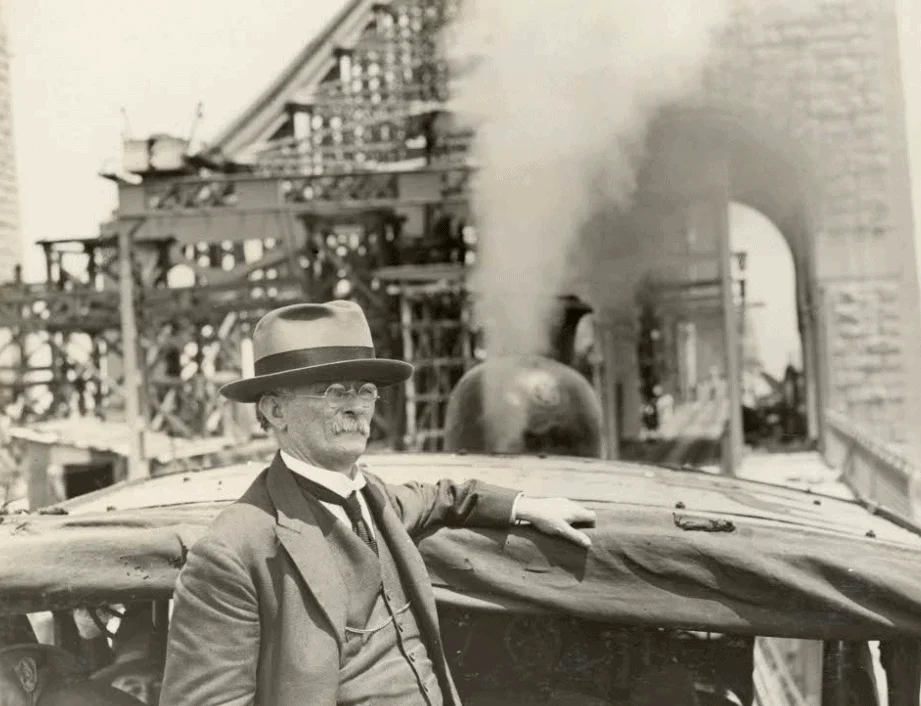
13. The bridge was completed during the Great Depression
One of the most amazing facts about the Sydney Harbour Bridge is that it was one of the few massive construction projects that were completed during the Great Depression.
In New York, the Empire State Building and Rockefeller Center are a few more, but few of these massive projects managed to be completed during this time of economic turmoil following the Roaring Twenties.
The bridge got the nickname “the Iron Lung” because of this as it allowed thousands of construction workers to get a job during these harsh times (but they had to risk their lives for it though).

14. A tunnel to complement the bridge was built in the 1990s
Traffic over the bridge has grown exponentially in the decades after its opening, and by the 1980s, traffic levels became unsustainable. This means that there was only 1 option which was to complement the bridge with a tunnel that runs beneath the harbor.
Construction of the Sydney Harbour Tunnel started in the year 1988 and was completed in 1992. It’s only 1 of 2 tunnels below the Sydney Harbour and the only one for cars (the other one only supports rail traffic).
The tunnels offload the bridge with about 100,000 vehicles every day!

15. You need to pay to cross the bridge in a vehicle, and the price varies
Every vehicle that crosses the bridge needs to pay a toll and the time of the day you cross the bridge determines how much you have to pay. This varies between $2.5 and AUD 4 through a variable tolling system that has been integrated since 2019.
The original toll to cross the bridge was 6 pence for a car or motorcycle to cross, and 3 pence for a horse and rider to cross.
Times have certainly changed, haven’t they?
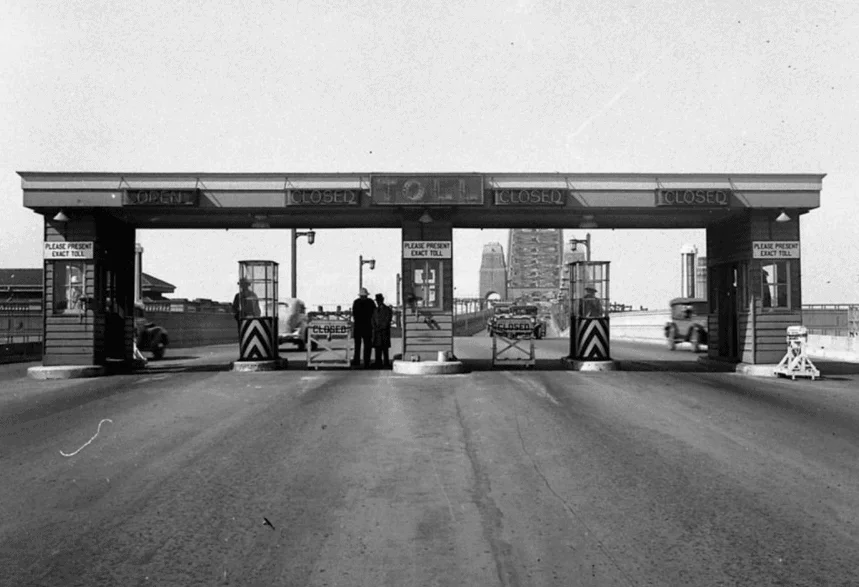
16. The Sydney Harbour Bridge carries 4 types of traffic
Just about everybody can cross the Sydney Harbour Bridge because it carries pedestrians, bicycles, cars, and trains!
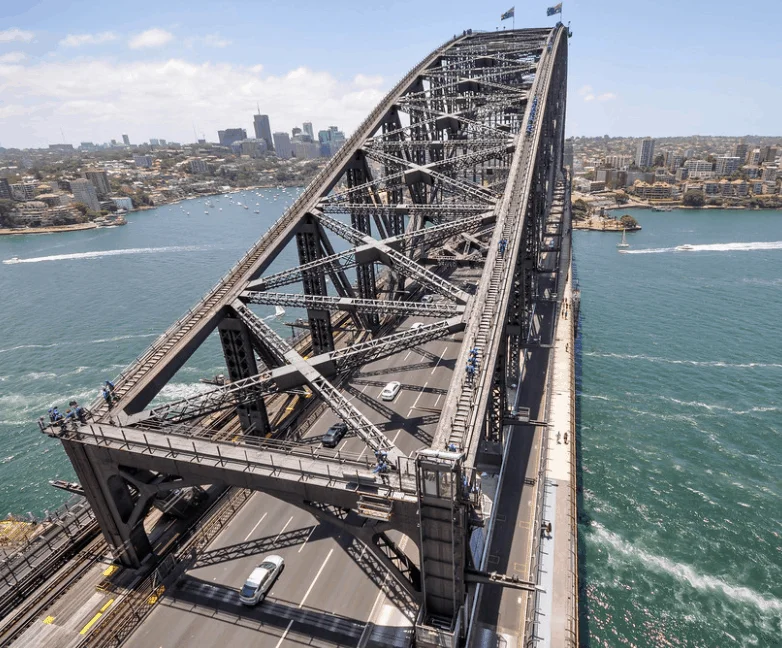
17. The bridge is a popular tourist attraction in Sydney
The Southeast pylon has served as a tourist attraction ever since the bridge opened. It’s one of the most popular tourist attractions in the city because it offers amazing views over Sydney and the harbor.
The attractions also consist of 3 floors of information about the history and construction of the bridge.
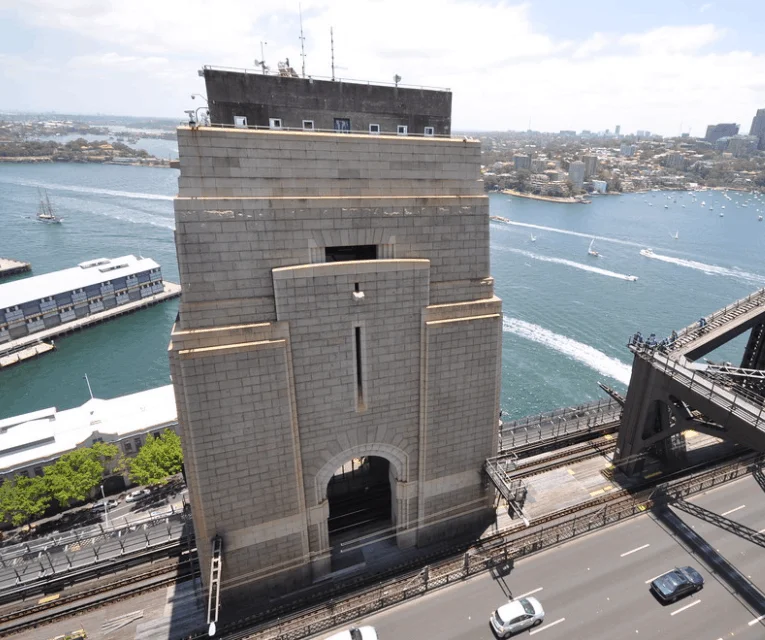
18. You can actually climb the Sydney Harbour Bridge
Are you a little more adventurous?
Then an attraction called “BridgeClimb” might be more suited for you as this service allows you to actually climb the upper arch of the bridge.
You surely can’t be afraid of heights though!

19. The bridge looks astonishing at night
The Sydney Harbour Bridge is one of the most iconic landmarks in the city and has become an icon of both Sydney and all of Australia. Especially the view together with the Sydney Opera House is world-famous.
Nothing compares to this view at night though as it simply leaves you standing in awe!

